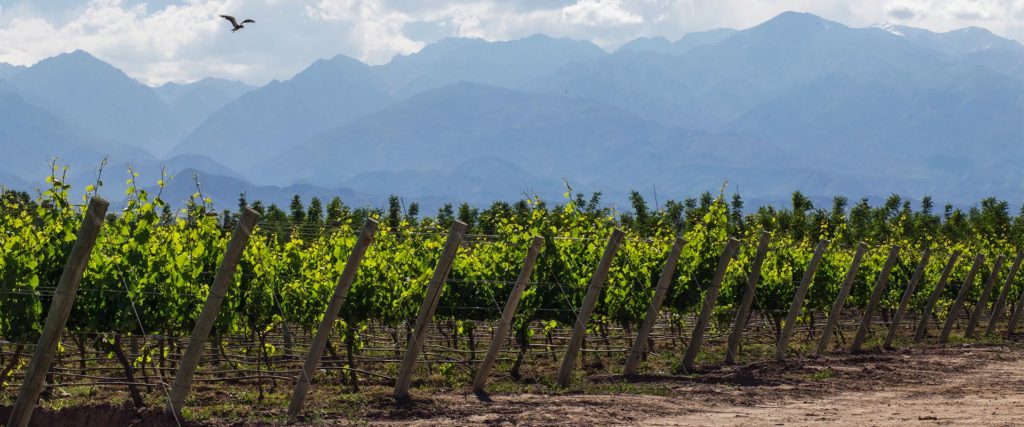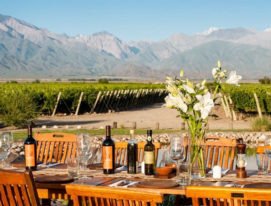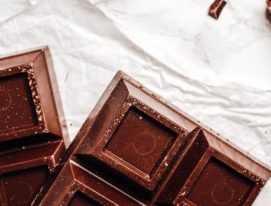The agricultural engineer Alejandro Bartolome began his winemaking project at an unusual time in his life: after retirement. His dream was to open a small winery that allowed him to pay maximum attention to quality while also protecting the environment.
The first step was the purchase of two and a half hectares of vineyards in Los Chacayes, the foundation on which Pielihueso was built and is now growing. Once the project was underway, and Alejandro had discovered how much he enjoyed this new lease of professional life, he expanded operations to another vineyard in Los Sauces, where the winery building itself will be constructed.
There one finds three hectares under vine with Cabernet Sauvignon first planted 70 years ago along with seven hectares of head-trained Malbec. In 2019, with a view to experimenting with white varieties, two more hectares were planted with Riesling, Gewürztraminer, Chenin Blanc and Verdicchio.
“Little by little I got more involved helping him. Firstly, with the concept for the labels, then sales and today it’s my main job,” says Celina, Alejandro’s daughter, who is in charge of commercial strategy and communications at Pielihueso.
“We haven’t changed since the beginning: we’re still a small, conscientious family project determined to make an impact beyond the liquid in the bottle.”
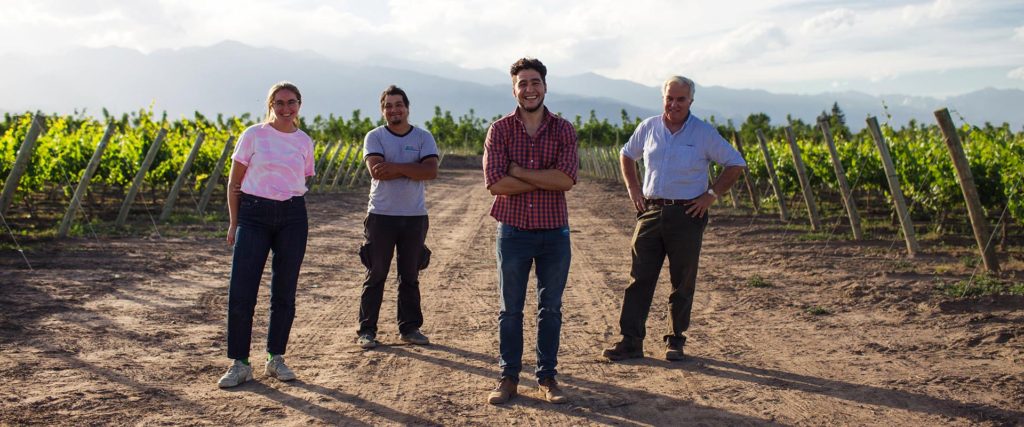
Pielihueso, sustainability and purity
Thanks to this commitment to have a positive impact in the wider world, the Bartolmes expanded their original vision after purchasing the Los Sauces vineyard, applying organic practices throughout the operation and only using organic additives and goat manure as fertilizer.
“We were never in any doubt because our project was always to ensure we do as little harm as possible to the environment and to create a virtuous circle between the product and its final expression,” says Celina.
Today, these practices also help to preserve the purity of the grapes, a process consolidated by the simple winemaking methods employed. All of Pielihueso’s wines are made through spontaneous fermentation with natural yeasts and are essentially never filtered with the exception of some of the reds, which go through a coarse filter in order to eliminate large suspended particles.
So, depending on the wine, sulfites are usually only added once during the winemaking process and then only in very precise measurements to ensure the health of the end product.
“We mainly use stainless steel tanks for fermentation. The aging depends on the wine and what we have available,” Celina explains. “We have several used 225-liter barrels and we also use concrete tanks and eggs. We recently also bought Spanish clay amphorae that we’ll use to continue making new styles of orange, white and rosé wines.
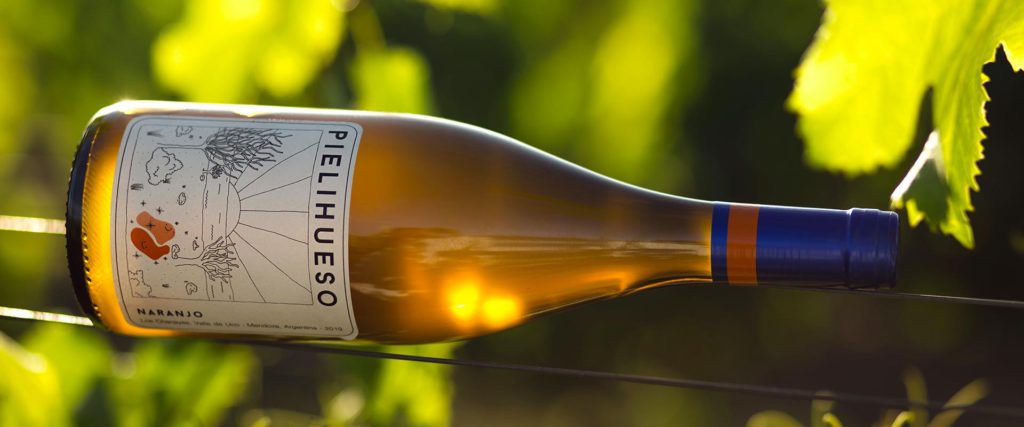
New waves in Argentine wine
The orange wine especially has proved to be one of Pielihueso’s biggest successes and they were one of the first to make wines in that style in Argentina. It is a blend of co-fermented Torrontés, Sauvignon Blanc and Chardonnay aged in contact with skins for 4 months.
The same blend of grapes, without the contact with skins, is used for Blanco Primero, while the Rosado Primero is an unconventional mixture of 90% Petit Verdot, Pinot Noir and Malbec.
Among the reds, Malbec Primero is made entirely with grapes from Los Chacayes, and Tinto de Los Sauces is structured around a blend of grapes from old vineyards: 50% Malbec and 50% Cabernet Sauvignon.
Pintó Verdot, meanwhile, is a blend of Petit Verdot harvested in three different years and 10% Cabernet Sauvignon, and Vino de Señor – which mixes two different Malbec vintages with Cabernet Franc – is the only Pielihueso wine to be aged in new barrels; the result of Alejandro’s desire to make a classical wine, the kind he drinks with his buddies.
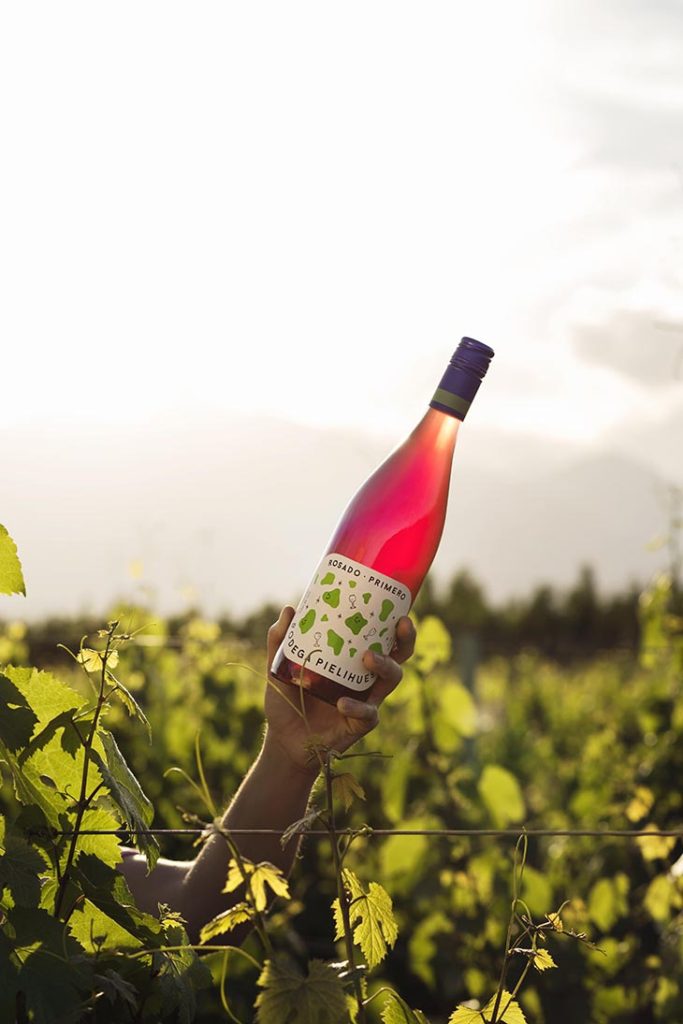
The label for Vino de Señor – which has a drawing of Alejandro’s dog, whose name is Señor – is one of the examples of the special focus Pielihueso place on design, which also receives input from Carmela and Alejandro, Celina’s siblings.
“The idea is for what you see on the outside to reflect the work that went into it: innovation, honesty and open-mindedness toward a new way of seeing and understanding wine. We use illustrations by my brother Ale not just for labels but also t-shirts and outdoor advertising.”

